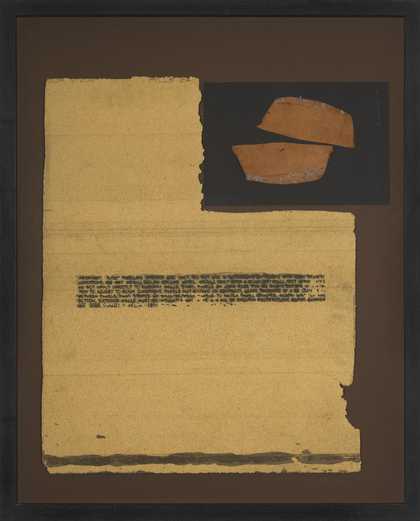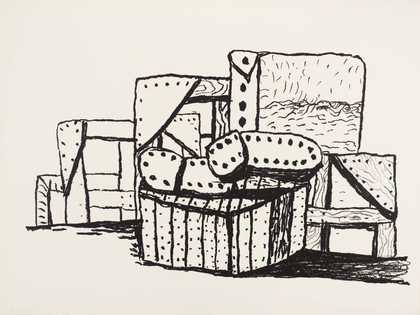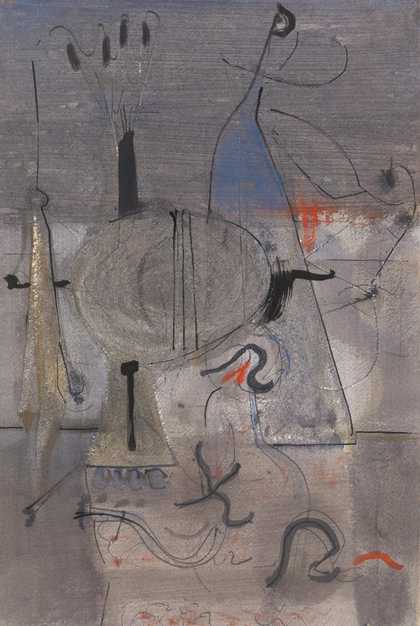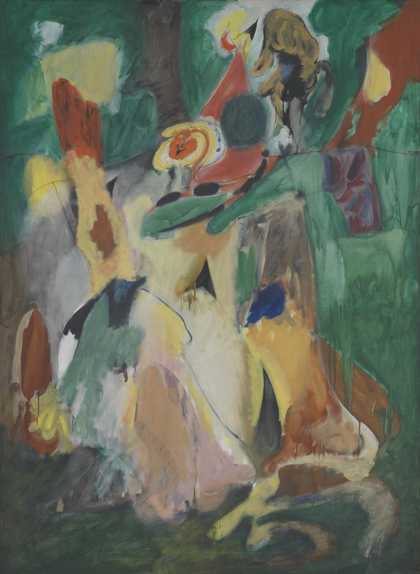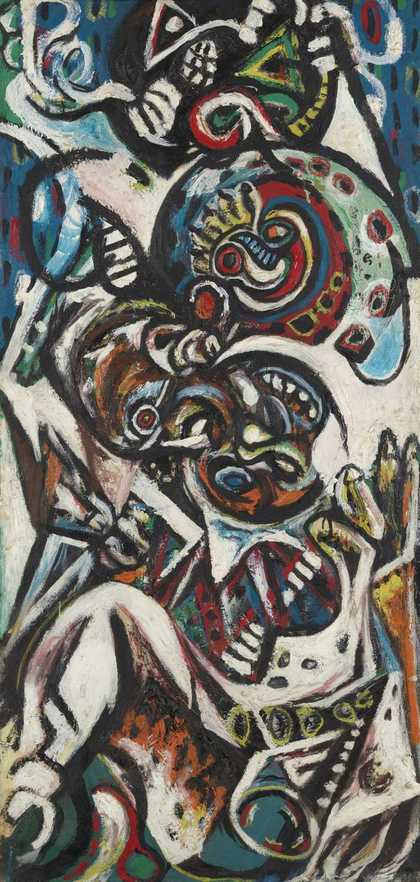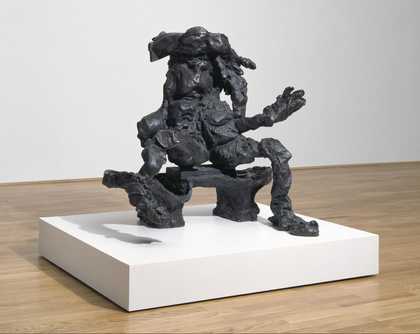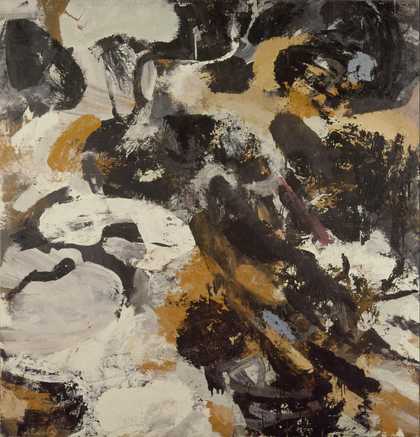
Ben Shahn
Lute and Molecules (1958)
Tate
The Works Progress Administration Federal Art Project was one of a succession of art programmes set up under the American President Roosevelt’s New Deal policy to combat the Depression.
In 1933 Roosevelt set up the Public Works of Art Project which in five months employed 3,749 artists who produced 15,633 works of art for public institutions. Pictures were expected to be American scenes but otherwise artists were given complete freedom. From 1934–43 the Treasury Section of Painting and Sculpture employed artists to create paintings, murals and sculpture for the embellishment of federal buildings. From 1935–39 the Treasury also ran a parallel scheme, the Treasury Relief Art Fund.
The Federal Art Project, administered by the Works Progress Administration, ran from 1935–43 and within a year of the start was employing some 5,500 artists, teachers, designers, craftsmen, photographers and researchers. Some of the most important works that came out of these projects were murals in public buildings inspired by the example of the Mexican Muralists. These programmes gave an enormous boost to art in America, not least by raising the morale of artists and are now considered to have been a crucial factor in the explosion of creativity in American art following the Second World War (see abstract expressionism).
Tate has no works from the Federal Art Project itself but some artists who featured are also in our collection.

